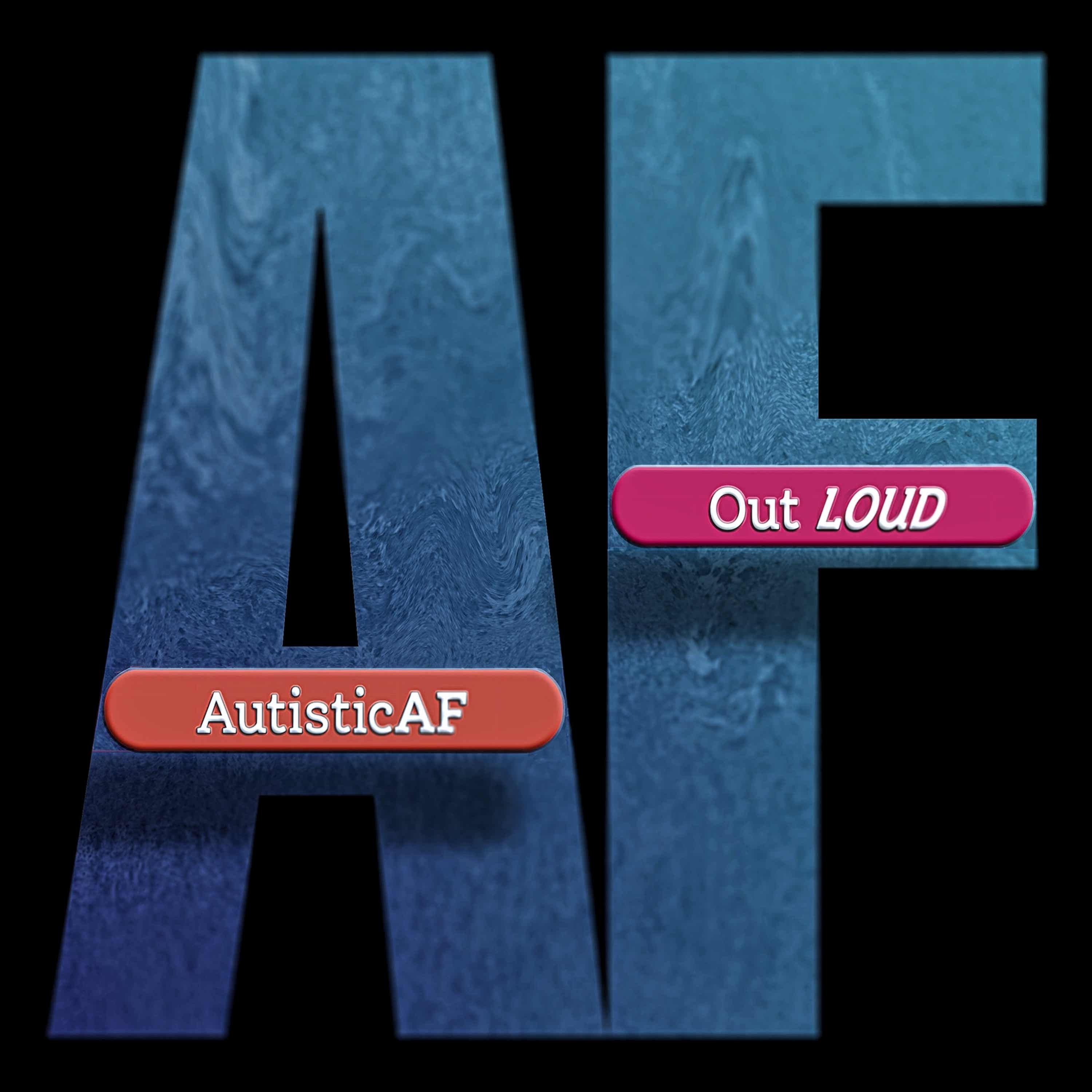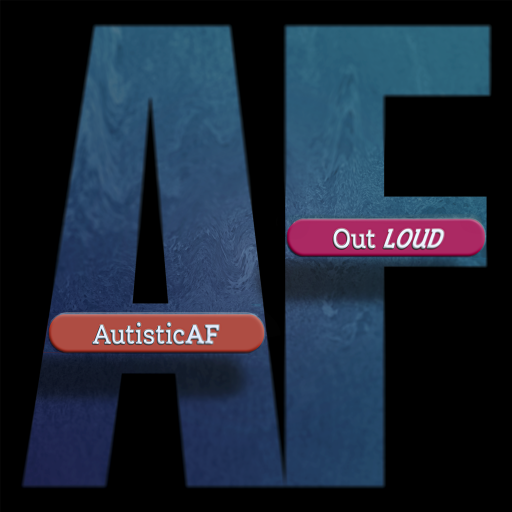
One Autistic Voice: Escapin Up The Country – #AutisticAF Out Loud
Subscribe to hear new episodes when they publish…
Apple • Spotify • PocketCasts • Amazon/Alexa • Audible • All Platforms
Video Cast
Part 1, “Making It Work for Me” here.
INTRO
Hi! I’m still Johnny. And I’m still Profane.
Let’s jump right into Part 2 of “Designing My Home Around Adult Autism.” I call this one, “7 Survival Principles.”
Because finally learning to create a place of safety, peace, and passionate work…
Did more than keep me out of psych wards.
It kept me alive. No joke.
If you’re autistic, love one, work with some… or just can’t figure out if you are one…
You really, *really * need to think about where you live…
HERE ARE THE 7 PRINCIPLES…
And some bonus tips… I’ve used for myself.
Tbh, I haven’t been able to use these strategies in every living situation… all the time.
But I always keep them in mind. And I try to work toward them.
1. Every detail in my home should support my autistic life…
limited social interaction,
intense passions & interests,
a need for structure and routine,
sensory processing differences,
executive functioning differences…
and physical or cognitive disabilities.
My lighting can be neither too bright… nor too dark. Bright lights… especially blue, fluorescent or LED… overstimulate me. Dark surroundings can cause depression.
It took me years to discover the perfect solution. Avoid overhead lights altogether. Instead, create bright “pools” of light with lamps in functional areas. Reading lamps, spotlight on the baking counter, low-wattage bulbs on end tables…
The QUIETER, the better. I didn’t discover this till I moved to rural Indiana. Traffic, sirens, yelling, parades, mega-bass car radios… were exhausting me. I had no idea.
Now I turn off every fan I can. Noisy lights. Turn the refrigerator up so the fan kicks on less. I put up heavy drapes and block unnecessary windows against traffic and neighbors. When I hang quilts or colorful blankets on my walls… such a pleasant, cozy hush.
I also converted a small 8 x 8 “bedroom” into a blacked-out, noise-insulated yoga room. Doubles as a safe space for when I must isolate.
I thrive with lots of fresh air and outdoor activity. When I can, I use air purifiers & filters. This may be due to allergies… or my chronic respiratory problems. Either way, it helps with my focus a great deal.
Less is more.
More time. More energy. More awareness for what’s important to me. I have as few objects as I can in my home. Now, it’s not exactly a Zen desert… but I do tend toward the minimalist in my art AND life.
If an object doesn’t have a use, embody a memory, or radiate enough beauty to make me feel something… Do I really need it?
2. Simple frustrations can stop me from achieving even simple goals…
If I meet the same obstacle a second time… I stop and fix it. Now.
3. Decisions are hard for me.
I try to decide once, and move on.
4. My awareness of my surroundings varies.
My mood varies. And I dissociate… space out or trance out… a great deal. Think “absent-minded professor.”
Both can dim my awareness of what’s going on around me. And I get bored easily. So I’m frequently lost in my head.
I bump into things a lot. My house has to assume an autopilot role to help me.
I tend to rely on “cognitive maps” to get around.
I put furniture and floor items in logical places… and then never move them…. At least not without planning and thought. That way, I can get from point A to point B, without thinking. Like stepping around the bathroom scales in Part 1…
Which if you haven’t read, you should go download…
Finding the right “home” for a tool or utensil is key. I imagine, where does an object want to live? Where does it feel it wants to belong? Like pets…
Where’s the first place that pops in my mind when I picture using the object?
Fingernail clippers, for instance. In a hurry, I might use them anywhere in the trailer. Playing guitar, sitting chatting at the table… But after, they always go home to a specific corner in my bathroom drawer. Because that’s the first place I groom after a shower.
I avoid rugs. I invariably trip on them because I forget they’re there… Or when I’m not aware enough to lift my feet. I trip on wall-to-wall carpet too.
My favorite to walk on are hardwood floors… Tile or linoleum, vinyl… work too.
BUT I also avoid HARD bare floors. When I dissociate, I can forget I’m holding a glass of water… until it spills or smashes. Wooden floors are somewhat forgiving. I have lived on tile over concrete… not a good choice.
5. I have trouble negotiating 3D space.
I constantly bump into things… with the bruises to prove it. And it takes a lot of attentional energy to avoid injury. I put foam rubber on the corners of counters, washing machines, shelves… Anything I bump into. I try to make sure all hallways are clear of ALL obstacles. Including pictures on the wall… If they stick out much. I try to keep ALL doorways clear, at least 2 to 3 feet… No nearby furniture, baskets, shoes, piles of odds & ends.
THE CONCEPT OF FLOW IS CENTRAL TO MY LIFE.
I never made a religion of Feng Shui… but I use a few principles religiously. I try to design each room as if water were flowing through it… Where would it flow freely? Where would it be forced to slow down? Where would it get trapped?
Because in my foggy mental state, I tend to wander like water… path of least resistance.
I must be very careful of open doors, cupboards, drawers. I walk into them or bonk my head over and over. When I can, I remove them. This also helps me organize as I talk about in my next point.
6. If I can’t see it… I forget it. Soon… it doesn’t exist for me.
Things in drawers, piled in layers. Things behind doors. Things in cupboards. Things under beds. All become invisible to me.
I’ve exquisitely organized drawers thousands of times in my life. Only to forget what’s in them… within moments.
I use open shelves or chifforobe for my clothes instead of a dresser. Socks & underwear especially. Drawers become a random mess that won’t close.
I use open shelves for the pantry. I set it up so I can turn, choose, grab, and go from my chopping block.
I use a transparent over-the-door shoe organizer for nearly all my tools. Toolboxes & totes drive me crazy. My home repairs went up 1,000% when I could actually FIND any tool I needed at a glance.
7. If I can’t touch it… I don’t really understand it. Soon… it doesn’t exist for me.
Using my hands helps me remember, think, understand. This includes writing… If I write it, I remember it.
Sometimes… if I just handle the tools in one of my nooks… baking or writing… it can give me the desire to do. So I leave as many tools out to touch as I can. They lend me motivation… when I stroke them.
I organize my workspace around ease of reach. If I use a measuring cup daily… I make sure it’s within an easy arm’s length in my cooking nook. Same for my hammer on my workbench.
If I use a tool several times a WEEK, it must be within a few steps. If I use it once in a while, I make sure it’s in plain sight within the room.
But less than MONTHLY…? Do I really need it?
I obsessively containerize… in transparent containers like jars. Objects with similar uses belong together. In my mind… and in my living space. I’d rather grab one jar of screwdrivers, than decide which ones I might need. Easier putting them away too.
I use baskets, trays, jars, pails… whatever I have handy to group similar objects.
Without containerizing my life? Too much fussy detail. Too many chances for frustration. Or loss.
OUTRO
I hope you got some ideas from Part 1 & Part 2.” Some you might want to try out. Some may inspire you to find your own solution…
I hope you’ll share your ideas with me in the comments. You might want to check out the “Further Reading” in the transcript at AutisticAF.me… along with other posts.
Quick reminder. Find #AutisticAF Out Loud podcast on Apple, Spotify, most podcast platforms. On YouTube, closed captions support folks with audio processing difficulties. like me…
If you learned something from this episode, please consider supporting my expenses. Most podcast apps have a support button. And there are links to PayPal and Ko-Fi in the transcript. Or use Facebook Pay to “Johnny Knapp Âû.”
But… as always…
The best support you can offer…?
Share this episode with a friend that you know… cares.
Part 1, “Making It Work for Me” here.
RESOURCE ARTICLES FOR FURTHER READING:
The Ideal Home for the Autistic Child: Physiological Rationale for Design Strategies
“Major indoor triggers include irritants such as paints, cleaning agents, pesticides, and perfumes (both personal from toiletries and from deodorizers) as well as building materials such as sealants, plastics, adhesives, and insulation materials.”
Discussion of clumsiness and apraxia
Dyspraxia & Adults, Dyspraxia Foundation USA
Autism-Friendly Design Ideas (carautismroadmap.org)
Discussion of insulation from sensory input from in the environment. Dividing areas into certain activities. Indirect lighting. Easy navigation. Quiet rooms & safe spaces.
“Inside the home, predictability can be a big deal to some on the spectrum. Each room should have an obvious purpose, transitions between rooms should be smooth and their boundaries should be clear. This may help an autistic person establish routines and increase independence, while minimizing anxiety.”
A few additional details of my systems & routines

One Autistic Voice: Escapin Up The Country – #AutisticAF Out Loud
Subscribe to hear new episodes when they publish…
Apple • Spotify • PocketCasts • Amazon/Alexa • Audible • All Platforms
Support AutisticAF.me here: Paypal · Ko-Fi · Facebook Pay “Johnny Knapp Âû“



Leave a comment